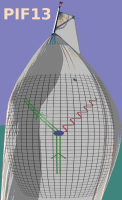Speaker
Prof.
Christoph H. Keitel
(Max Planck Institute for Nuclear Physics (MPIK))
Description
The interaction of highly charged ions and nuclei with intense light sources is introduced [1]. We begin discussing the quantum relativistic bound electron dynamics in highly charged ions and super intense laser fields [2,3]. Then, special attention is devoted to laser-induced tunneling in the relativistic regime. Here, we show that an intuitive picture can be developed for relativistic tunneling employing spatially dependent energy levels. Also the issue of time under the barrier is discussed at length and how the various times may leave detectable signatures [3]. In what follows, we investigate how populations may be transferred among nuclear states employing accelerators and XFEL light [4]. Then, various applications employing high frequency light are introduced such as high-precision determinations of nuclear lines and phase-sensitive storage schemes of x-ray photons [5]. Finally, resonance fluorescence of highly charged ions is discussed and how this may be favorably employed in laboratory astrophysics [6].
REFERENCES:
[1] A. Di Piazza, C. Müller, K. Z. Hatsagortsyan, C. H. Keitel, Rev. Mod. Phys. 84, 1177-1228 (2012).
[2] H. G. Hetzheim and C. H. Keitel, Phys. Rev. Lett. 102, 083003 (2009); B. Galow, Y. I. Salamin, T. Liseykina, Z. Harman and C. H. Keitel, Phys. Rev. Lett. 107 (185002) (2011).
[3] M. Klaiber, E. Yakaboylu, H. Bauke, K. Z. Hatsagortsyan, and C. H. Keitel, Phys. Rev. Lett. 110, 153004 (2013).
[4] W. Liao, A. Pálffy, C. H. Keitel, Physics Letters B 705, 134-138 (2011) and Phys. Rev. C 87, 054609 (2013).
[5] O. Postavaru, Z. Harman, C. H. Keitel, Phys. Rev. Lett. 106, 033001 (2011); W. Liao, S. Das, C. H. Keitel, A. Pálffy, Phys. Rev. Lett. 109, 262502 (2012); W. Liao, A. Pálffy, C. H. Keitel, Phys. Rev. Lett. 109, 197403 (2012); B. W. Adams, C. Buth, S. M. Cavaletto, J. Evers, Z. Harman, C. H. Keitel, A. Pálffy, A. Picon, R. Rohlsberger, Y. Rostovtsev, K. J. Tamasaku, J. Mod. Opt. 60, 2 (2013).
[6] S. Bernitt, G. V. Brown, J. K. Rudolph, R. Steinbrügge, A. Graf, M. Leutenegger, S. W. Epp, S. Eberle, K. Kubiček, V. Mäckel, M. C. Simon, E. Träbert, E. W. Magee, C. Beilmann, N. Hell, S. Schippers, A. Müller, S. M. Kahn, A. Surzhykov, Z. Harman, C. H. Keitel, J. Clementson, F. S. Porter, W. Schlotter, J. J. Turner, J. Ullrich, P. Beiersdorfer, J. R. Crespo López-Urrutia, Nature 492, 225 (2012).
Author
Prof.
Christoph H. Keitel
(Max Planck Institute for Nuclear Physics (MPIK))
Co-authors
Dr
Adriana Pálffy
(Max Planck Institute for Nuclear Physics (MPIK))
Mr
Enderalp Yakaboylu
(Max Planck Institute for Nuclear Physics (MPIK))
Dr
Heiko Bauke
(Max Planck Institute for Nuclear Physics (MPIK))
Dr
Karen Z. Hatsagortsyan
(Max Planck Institute for Nuclear Physics (MPIK))
Dr
Michael Klaiber
(Max Planck Institute for Nuclear Physics (MPIK))
Dr
Wen-Te Liao
(Max Planck Institute for Nuclear Physics (MPIK))
Dr
Zoltán Harman
(Max Planck Institute for Nuclear Physics (MPIK))

